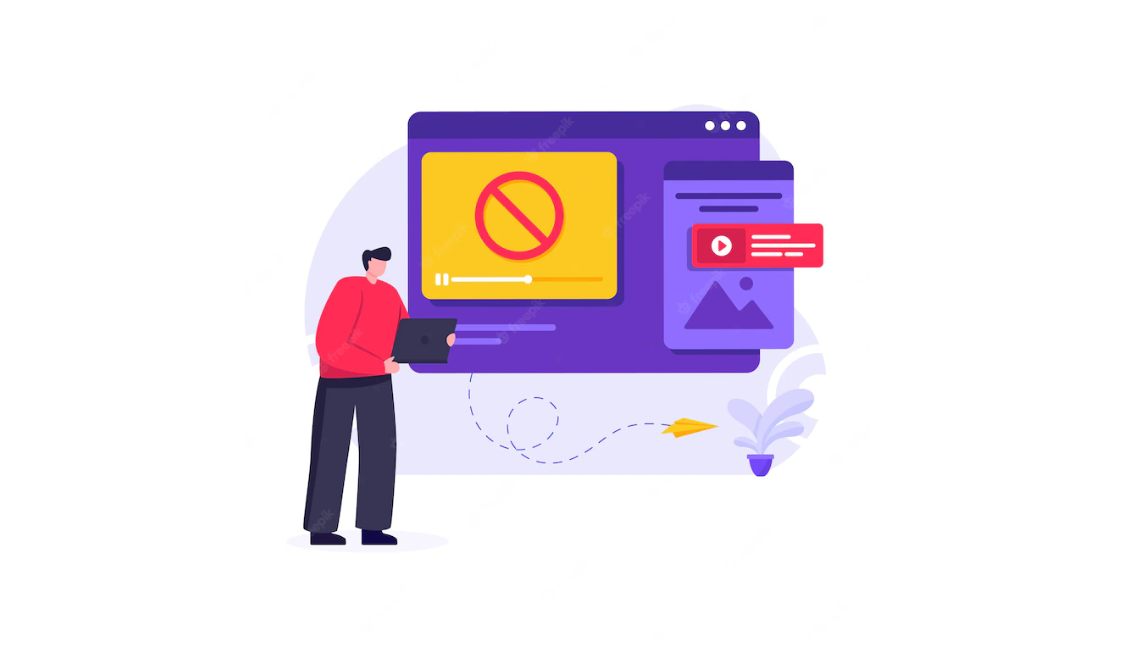
YouTube doesn’t specify an exact count of reports required to remove a video, as this varies based on the situation. For severe violations, even one report could be enough, while minor issues might need multiple reports. Additionally, receiving three community standard strikes within 90 days could lead to demonetization and even account suspension.
YouTube serves as a platform for sharing a diverse range of videos. It offers numerous features to enhance user-friendliness and ensure a seamless experience.
YouTube’s goal is to provide a comfortable and convenient platform for all its users while prioritizing user privacy.
Is Flagging A Video On YouTube The Same As Reporting It?
Flagging a video on YouTube is essentially equivalent to reporting it. In fact, if you inquire about how to flag a video, the steps involved would lead you to report the video. It’s as if these two terms represent a singular action with different names.
Hence, there’s no real difference between flagging and reporting. Both actions are akin to saying, “Hey, there’s definitely a problem with this video; please do something about it.”
What’s The Minimum Number Of Reports Required To Remove A YouTube Video?

YouTube places significant emphasis on providing users with a seamless and comfortable experience, fostering a safe environment on its platform. Its community guidelines mandate channel owners to exercise caution when posting content on their respective channels, adhering consistently to YouTube’s guidelines to prevent violations.
It’s crucial to exercise care and respect YouTube’s policies, as they are designed for the benefit of all users. YouTube is often used as a means of time-out, allowing individuals to engage with content that aligns with their interests. Encountering inappropriate material can lead to feelings of discomfort, anger, and distress, negatively affecting the overall experience.
Nonetheless, some users disregard YouTube’s guidelines and exhibit a lack of consideration for others when posting content that blatantly violates these guidelines, potentially causing distress. To address such instances, YouTube employs a professional and efficient team comprising both human moderators and automated systems to identify and remove inappropriate content.
In cases where a video is exceedingly disturbing and clearly breaches the guidelines, YouTube’s automated flagging system marks the video for review, triggering actions that may result in its removal. Specific human moderators dedicated to YouTube’s flagging community also have the authority to flag videos they believe should not be present on the platform, thereby initiating their removal. YouTube also empowers its users by allowing them to flag videos they deem inappropriate.
It’s important to note, however, that a flagged video’s removal isn’t immediate. Various factors come into play, including the severity and gravity of the situation. YouTube must determine whether the reported issue pertains solely to the user’s perspective or if the video indeed contains explicit abuse or clear guideline violations.
Consequently, pinpointing the exact number of reports required to remove a video is challenging, as it depends on multifaceted considerations. YouTube refrains from disclosing the precise number of reports needed to trigger removal, as each situation necessitates thorough evaluation.
However, following extensive research, I’ve arrived at the conclusion that in cases where a video contains highly inappropriate content that unmistakably breaches the community guidelines, a single report is often sufficient for it to be removed. In such cases, the associated account might even face cancellation. Conversely, if a video’s content is ambiguous and requires assessment to ascertain its appropriateness, multiple reports might be required to prompt YouTube’s intervention.
It’s essential to recognize that if a video receives a minimum of three Community Standards strikes within a 90-day period, YouTube may revoke the channel’s monetization privileges. This underlines the significance of community cooperation in upholding YouTube’s standards and ensuring a safe and enjoyable platform for all users.
What Are The Potential Grounds For Reporting A YouTube Video?
There exist various situations that might prompt you to report a video, all of which are connected to violations of YouTube’s guidelines. The table provided below outlines some of these potential reasons for reporting:
| Reasons | Explanation |
| Hate Speech | If the video includes hate speech, derogatory or abusive language, or displays violence or self-harm, it goes against the guidelines. In such cases, you have the option to report the content. |
| Explicit Content | YouTube ensures a secure atmosphere, making the presence of pornography, nudity, or any type of sexual content inappropriate. |
| Bullying And Harassment | Creating videos that single out and target an individual for bullying or harassment is inappropriate and entirely unacceptable. |
| Misinforming | Spreading misinformation about anyone or anything is highly unethical. Therefore, it’s important to exercise caution and refrain from sharing false information solely to gain views. |
| Impersonation | If videos are discovered to imitate someone or if they’re duplicated from another channel, especially if the content is copyrighted, they can be reported for both malicious intent and copyright infringement. |
| Privacy Breaches | If videos reveal personal information about someone that hasn’t been publicly disclosed, it’s unethical and can be reported. Videos that put minors in danger and exploit them are also strongly discouraged. |
How Can You Report A YouTube Video?
If you stumble upon a YouTube video that you believe should not be present on the platform and you wish to report it, you can follow these steps:
- Start by opening YouTube.
- Then search for the specific video you want to flag.
- If you haven’t clicked on the video yet, you’ll notice a vertical three-dotted icon adjacent to the video title. Click on this icon to reveal a menu.
- Within the menu, locate the “report” option, represented by a flag-like icon.
- Upon clicking on this option, a pop-up window will emerge, presenting you with a variety of choices to specify why you are reporting the video.
- Once you’ve selected the appropriate reason, click on the “report” button, and your report will be submitted.
If you are already watching a video and find it inappropriate, the process remains quite similar. The only distinction is that you’ll need to access the menu containing the “report” option by clicking on the settings icon situated at the top right corner of the video.
What Happens Next When You Report A Video On YouTube?
When a video is reported, the proficient YouTube moderation team comes into action, undertaking measures based on the gravity of the situation.
Upon reporting a video, it enters a thorough review phase managed by both human reviewers and automated systems. During this evaluative process, the team investigates the circumstance, assessing whether the video content breaches guidelines and policies. This evaluation begins by linking the reported issue with the video content and subsequently identifying any potential guideline violation.
The extent of the violation influences YouTube’s following actions. If the violation appears minor in nature and lacks significant impact, YouTube might choose not to address it. Conversely, if evident violations like explicit content or hate speech emerge, swift action, such as video removal, may be implemented.
Subsequent to such actions, the video’s creator is informed about the specific guideline breach that led to the video’s removal, offering insight into the reason behind the decision and that they should be more careful in the future.
YouTube also extends the courtesy of allowing video owners to appeal the removal decision if they believe it’s unnecessary. This allows them to present their perspective and potentially correct misunderstandings.
However, if an account consistently disregards guidelines without corrective action, more serious consequences are on the way. Account strikes, demonetization, or even account suspension might be imposed as consequences for repeated violations.
To avoid such consequences, it’s crucial to adhere to YouTube’s guidelines and policies when preparing and uploading videos onto the platform.
Is It Possible For Video Owners To Identify Who Reported Their Content On YouTube?

YouTube doesn’t offer the ability to discover who reported your content, and there’s no alternative method to find this information.
YouTube intentionally maintains this information as private. This approach ensures users can report objectionable content freely without concern about potential consequences from the video owner.
Therefore, if you’re seeking to identify who reported your videos as the owner, unfortunately, this isn’t an option. It’s advisable to be cautious about the content you post to avoid reports in the first place. And if you’re the one reporting content, rest assured that your identity remains confidential in all regards.
Sum Up
- YouTube is a diverse video-sharing platform with a user-friendly approach.
- Flagging and reporting videos are the same action, indicating issues with a specific video and appealing to take it down.
- Minimum reports needed to remove a video aren’t disclosed by YouTube and depend on the gravity of the situation.
- Reporting grounds include guideline violations like hate speech, nudity, bullying, impersonation, etc.
- Reporting involves clicking three dots or the settings icon, selecting “Report,” and providing a reason.
- YouTube reviews reported videos using human and automated methods and action is based on violation severity and can lead to removal.
- Reporter identities are confidential and not disclosed to video owners.